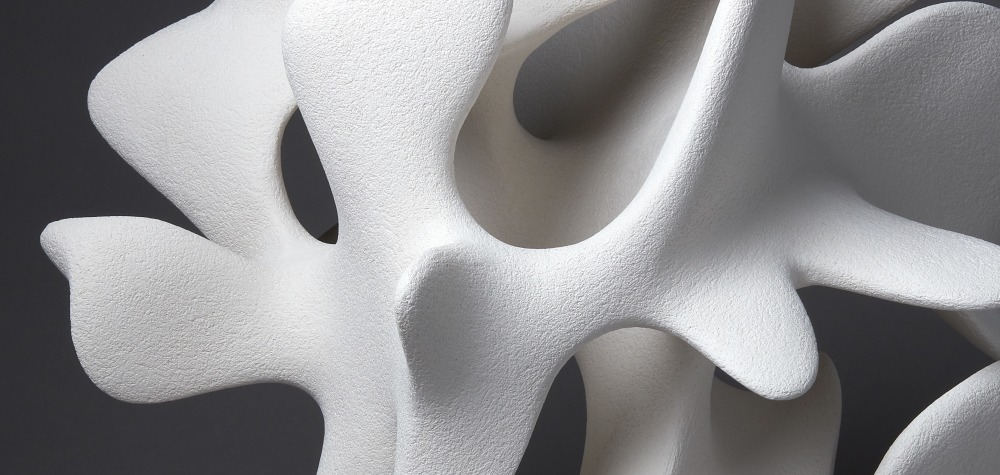Dorothée Loriquet
There’s nothing static about Dorothée Loriquet’s sculptures. Her biomorphic compositions rotate in space while retaining a vertebral dimension, particularly in her most recent works. “My main concern is not the contours, but rather the empty spaces without which movement would not exist.” Indeed, the artist repeats them to the point of breaching the material beyond the constraints of gravity.
The real difficulty in elaborating this construction game is finding and maintaining perfect balance throughout to enable the piece to make these turnarounds on each anchor point. The spectator therefore sees not one work but several, thanks to the varied possibilities of its positioning. Indeed, the artist repeats them to the point of breaching the material beyond the constraints of gravity. As a small child, Dorothée Loriquet already enjoyed the feel of clay and attended a ceramics class in Meudon. But she came from a family of musicians, and it was therefore perfectly logical that she should also be interested in music. When she began to study the cello at the Conservatoire, her interest in ceramics got pushed into the background, and it was not until two decades later, after much soul-searching, that she found her way back to it. In 2001, she did a full-time art course with Terre et Feu before setting up her own studio in Paris. For the next few years, her life revolved entirely around her creativity, and her teaching commitments. Various encounters resulted in her moving to the Dordogne for a while, and then recently, to a charming house in Gennevilliers, back in the Ile de France region. While it may have taken Dorothée Loriquet some while to find her way, it was thanks to clay that she did so. Clay is what allowed her to prove herself and forge her style. The verticality of her earliest pieces illustrates this well. It took two to three years’ of gradual, intuitive and intelligent research and experimentation before her pieces began to twist and turn and spin. And it was through these coiling, spiralling, spinning movements, similar to those of dance, that she was finally able to give free rein to this creative energy which, in her case, cello-playing had merely restrained. She creates her pieces by coiling, a technique that is extremely risky in her case as it involves making a completely open structure and creating a balancing game between voids and solids. Once the piece has been built up in this way, the other difficulty to be faced is sanding the leather-hard clay by hand. This stage requires immense precision and delicacy – a single clumsy move can prove fatal. Dorothée is adept at this risky process, where her skill as a cellist is no doubt also called into play. The piece is then given layer after layer of a highly-diluted pigment solution to obtain a saturated hue. Intense colour, bright and pure, is also what makes this work so powerful. The colours range from black to white, via blood red, purple, candy pink, orange, royal blue, lemon yellow, bright green and more. As the artist explains, “Certain pieces call out for certain colours; the choice is not pre-determined. I let myself be led.” The void plays a leading role. It’s no mean task for a sculptor to play around with the void, mastering and dominating it. Here, it is defined by contours, volutes and colour, and adds to the dynamic nature of the piece. Matter serves the void, revealing it rather than imprisoning it. Hence this immensely positive feeling of vitality when faced with one of Dorothée Loriquet’s sculptures.




